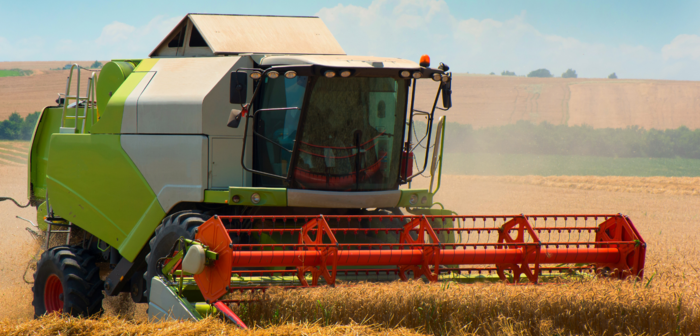Faced with an urgent need to drive improvements in the productivity, resilience and climate impact of British agriculture, leading plant scientist Professor Jane Langdale CBE FRS, University of Oxford – who led and authored a major review of UK plant science last year – has called on the next Prime Minister to prioritise investment in crop genetic research as the primary driver of productivity gains in agriculture.
Writing on the Science for Sustainable Agriculture website, Professor Langdale asks why, in its plans for R&D funding, the UK Government is spending 20 times more on digital and precision farming projects such as robotic harvesters, AI and sensor technology than it invests in long-term, strategic crop genetic research.
“These agri-tech innovations are incredibly important in driving efficiency improvements at individual farm level, but they will prove to be relatively worthless without supporting corresponding gains in genetic potential. There can be no justification for taxpayer investment in research on digital and precision farming applications to exceed the equivalent spend on crop genetic innovation more than 20-fold,” she insists.
Professor Langdale applauds commitments in the Government’s recent Food Strategy to maintain current levels of domestic food production, to create a separate Horticulture Strategy, and to develop a land use strategy by 2023.
No long term vision
However, she expresses disappointment that plans for a £270 million Farming Innovation Programme between now and 2029, focused on improving farm-level productivity, sustainability and resilience, make no mention of any long-term vision for targeted R&D investment, and include no commitment to a strategic Crop Genetic Innovation Research Fund, as many in the plant breeding and plant science community have advocated.
“My review last year found that the lack of long-term strategic funding, from either public or private sector, to transfer early-stage genetic discoveries from lab to field to farm remains the one of the most significant barriers to future productivity gains,” says Professor Langdale.
“It is a simple case of market failure. The modest and relatively inelastic income from seed royalties limits plant breeders’ ability to invest in more speculative or long-term targets. Because of this, and the lengthy timescales involved, the current system for financing near-market and translational R&D is not working, and opportunities to exploit major advances in our understanding of plant science are being lost.”
She also points out that this is not a new issue. The same gap in the research funding landscape, often termed the ‘Valley of Death’, was identified in a similar review of UK plant science led by Professor Chris Gilligan for BBSRC more than 17 years ago.
Little evidence govt grasps significance
“There is little evidence that the Government really grasps the significance or urgency of this issue. For example, Defra have suggested that the UK’s primary vehicle for bridging the long-recognised gap between early-stage discovery research and its translation into relevant crop backgrounds for use in commercial breeding programmes are the four Genetic Improvement Networks (GINs) covering wheat, oilseed rape, pulses and vegetables,” Professor Langdale observes.
“While valuable as a mechanism for networking between key players along the crop improvement pipeline, the GINs are woefully under-resourced. Defra currently funds the four GINs to the tune of £5.5 million over five years from 2018 to 2023. In other words, £275,000 per GIN per year. To set that in context, the Government’s flagship Transforming Food Production R&D programme is investing £90 million over four years in digital and precision farming projects.”
Professor Langdale’s report on the UK plant science landscape also called for a critical review of the Government’s Agri-Tech Strategy, to investigate whether the multi-million pound investments in the four Innovation Centres have provided value for money, or delivered the kind of step-change gains in agricultural productivity, efficiency and sustainability originally envisaged. None of the centres focused specifically on genetic innovation.
“I strongly endorse calls for a more coherent R&D strategy for crop genetic improvement which ensures promising new scientific discoveries have a clear translational pathway into crops and products of value to UK farmers and consumers. Independent studies have shown that genetic improvement accounts for more than two-thirds of crop productivity gains. Future allocation of research funding must reflect that, and a new, long-term Crop Genetic Innovation Research Fund (CGIRF) is urgently needed to bridge this long-recognised gap in R&D investment,” concludes Professor Langdale.
Advisory Group members
Matt Ridley – science writer and farmer
Professor Tina Barsby – plant scientist
Dr Julian Little – science communicator
Graham Brookes – agricultural economist
Lord Rooker – politician
Professor Helen Sang – livestock scientist
Helen Munday – food industry scientist
Dr Helen Ferrier – scientific and regulatory affairs adviser
Dr Craig Lewis – livestock breeder
David Hill – arable farmer
Paul Temple – mixed farmer
Professor Johnathan Napier – plant scientist
Julian Sturdy MP – politician and farmer
Alex Waugh – primary food processing
Dr Alastair Leake – agronomist and conservation scientist
Karen Holt – regulatory consultant
Nigel Moore – plant breeding
Daniel Pearsall – co-ordinator




